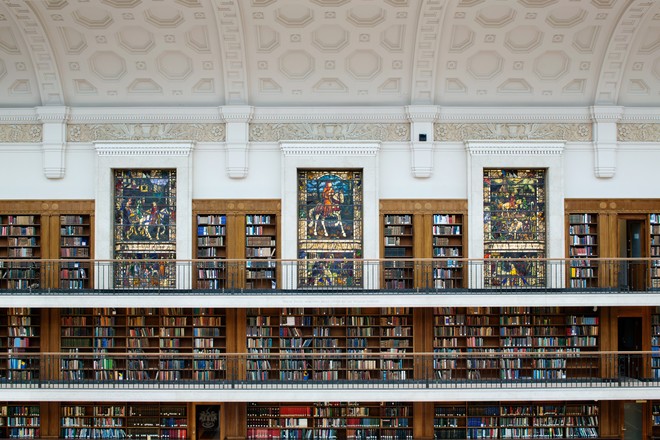
Chaucer windows
1941
Made by Frank G. O'Brien Pty Ltd.
Presented by Sir William Dixson
Made by Frank G. O'Brien Pty Ltd.
Presented by Sir William Dixson
The three stained-glass windows on the Southern wall commemorate the Canterbury Tales by Geoffrey Chaucer, the first great poet to write in English. The Canterbury Tales, his best-known work, tells a collection of stories by a group of pilgrims travelling from London to the Shrine of St Thomas à Becket at Canterbury Cathedral in the late 1300s.
The centre window shows Chaucer on horseback ready to ride with the Canterbury pilgrims. The left window shows the group leaving the Tabard Inn in Southwark, London. In the window on the right, the travellers are approaching Canterbury Cathedral. The lower panels illustrate the murder of Thomas Becket, to whose shrine the pilgrimage was made. Henry II’s court is represented on the left, and the martyrdom in the cathedral on the middle panel. On the right, Henry II is seen doing penance by the shrine of the murdered priest. The central band reproduces the first two lines of the Prologue to the Canterbury Tales:
‘Whan that Aprill with his shoures soote
The droghte of March hath perced to the roote’
(When in April the sweet showers fall
And pierce the drought of March to the root)


 Back to list
Back to list